Someone once said that basil tastes like summer. I would agree. This beautiful herb flourishes in the summer months, and its very distinctive taste and fragrance are unlike any other member of the mint family to which it belongs.
Basil originated from India, and it is a key ingredient in many delicious dishes, including this amazing spinach, cucumber and basil soup recipe. A few leaves can also be used to garnish a dish, flavor sparkling water, or brighten a special cocktail, like this spicy basil margarita, or this jam and basil mocktail.
This article contains affiliate links. If you make a purchase using one of these links, I will receive a very small commission at no additional cost to you, and it will help me maintain this website. Rest assured, I only recommend products I actually like!
How to Plant and Propagate Basil
Basil is a warm-weather crop, so you’ll need to wait to plant it until after the daytime temperature is consistently 70°F or more, and the evening temperature stays above 50°F. Alternatively, four to six weeks before your last spring frost, you can plant seeds indoors under a grow light or near a window that receives at least six hours of bright sun. Basil is very sensitive to the cold, so don’t transplant your seedlings or plant starts outdoors until the threat of frost is completely gone. Otherwise, you’ll risk losing them.
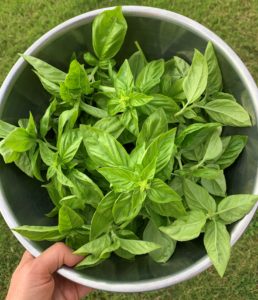
Basil seeds, which are small, should be planted 1/4″ deep in well-drained, organic soil with a pH between 5.5 and 6.5. Smaller pots work well for herbs, including this one. Keep in mind that mature basil plants reach an average height of 12″ to 14,” with some varieties growing considerably taller. If you plan on using your plants to make pesto, you’ll need to grow at least four of them to have an adequate harvest.
Basil is an annual, meaning it will last for just one season and will have to be replanted the following spring. Expect its leaves to turn black with the first frost and for the plant to die soon after cold weather settles in. In warmer climates, however, it is possible to extend the plant’s life by covering it when the temperatures drop, but this is an exception to the rule. Only a few times have I been able to overwinter a basil plant, and that’s because we were having a very mild winter. Another option if you’re growing them in containers, would be to bring the pots inside and station them by a warm, sunny window until spring arrives.
In addition to planting seeds, you can multiply your basil crop by propagating leaves from an established plant. It’s easy to do and only requires a small jar or glass filled with water and a 4″ cutting from an existing plant. It should take about a week or so for the roots to grow, at which time you can transplant it into a container or garden bed.
Sunlight, Water and Fertilizer
Basil requires at least six hours, preferably more, of full sun each day. And while it enjoys the heat, it prefers consistently moist, but not soggy, soil. If you’re growing basil in containers, remember they can dry out rather quickly, especially in the heat of summer.
Fertilize your plants with a balanced fertilizer or one that is slightly higher in nitrogen, which is a natural element that promotes foliage growth. If your leaves are pale green, it could be they’re not getting enough nitrogen.
Varieties
Basil is available in several different varieties, some of the most popular I’ve listed below:
Sweet basil, in particular, Genovese, is the traditional basil used in many standard Italian dishes like pesto.
Purple basil, so named because of its deep purple leaves and stems, makes a beautiful ornamental plant. But you can also cook with it just as you would sweet basil since it has a similar, though less sweet, taste.
Lemon basil is tangy and offers a nice change from traditional basil. It’s a good choice to serve with fish or chicken dishes.
Thai basil is growing in popularity and is used in Thai dishes, hence the name. It boasts a licorice flavor and can also be used to infuse flavor into different kinds of vinegars and oils.
Holy Basil has a spicy flavor, and it is used in Ayurvedic medicine to counter anxiety and stress. Some use the essential oils from other basil varieties for medicinal purposes.
How to Harvest Basil
Your basil plants will require pruning in order to maximize the flavor and the harvest. After the plants have produced their first 6 sets of true leaves (about 6-8″ in height), cut them off at an angle just above the second set of leaves. This will promote new growth and encourage more of a bush-like appearance. Here’s a good tutorial if you’re interested.
If your plants start to flower, pinch off the growth, otherwise, the plant will go into seed production mode, and the leaves will lose some of their flavor.
Be sure to gather your final basil harvest before your first cold snap, or the leaves will turn black and be unusable. That is, of course, unless you are going to bring the plants indoors for the winter.
How to Keep Cut Basil Fresh
The best way to store cut basil is to keep it in a glass or small vase filled with water, much like you would cut flowers. Basil is sensitive to the cold and won’t last long in the refrigerator.
How to Preserve the Harvest
Dehydrate Basil
To preserve basil, try drying the leaves in a low-temperature oven (150o F or the lowest setting possible) or a food dehydrator (this is the one I have). Duration will depend on how wet the basil is after you’ve washed it and the quantity. Keep an eye on it, and when it easily crumbles, it’s ready. Damp basil will mold when stored so be sure it is completely dry before storing it. Drying your basil harvest will ensure that you have plenty of seasoning during the winter months. While the taste of dried basil is wonderful, it is a bit different than fresh.
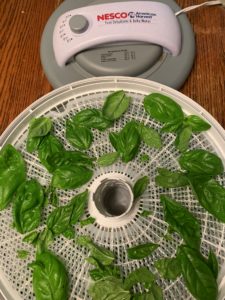
Freeze Basil
Another way to preserve the harvest is to make pesto and store it in the freezer. There are a number of recipes available, however, this is the one I use. It includes the traditional recipe, as well as versions for those who are dairy free, nut free, or are on an autoimmune protocol. I love pesto on fish, eggs, pizza, you name it! So I freeze batches in 4 ounce jars to take out and thaw as needed.
Diseases
Herbs, just like all plants, are susceptible to disease. Some of the more common diseases that afflict basil are powdery mildew, Cercospora leaf spot, downy mildew, and Fusarium wilt.
Powdery mildew is a fungus that requires immediate attention so that it will still be manageable. If you wait, it could get out of control. You can learn more about it and how to treat it here.
Cercospora leaf spot is also a fungus. It’s characterized by both circular and irregular brown or purplish leaf spots, with light colored centers. Remove infected leaves, and be sure the plant is getting enough circulation. Also, water the soil and avoid getting the leaves wet so as to deter this and other diseases. You can learn more about it and how to treat it in this article.
Downy Mildew is thought by many to be a fungus, however, it is actually caused by a parasite. The leaves of an infected plant turn yellow on top, while the underside has a white to gray or blue “fuzz.” Remove infected leaves in order to minimize spread of the spores. To prevent this type of infection, water the soil and not the leaves and make sure it is getting enough air circulation to keep the leaves dry. You can learn more about it and how to treat it here.
Fusarium wilt is another fungal disease that can infect basil plants. It is distinguished by dark brown spots on the stem and leaves that begin turn yellow and eventually die. You can learn more about this disease here.
Pests
Aphids are tiny, soft-bodied insects that hide on stems and the underside of leaves. There are several hundred varieties of aphids that attack food crops, and they vary in shape and color. They have one thing in common, however, they can do tremendous damage to your plants. Here’s my article with more details and how to treat these destructive insects.
Slugs and Snails enjoy basil just as much as we do. The easiest way to deal with these pests is to pick them off and kill them. You’ll have better luck if you look for them early in the morning and at dusk. Sometimes they will hide on the sides or under the edges of the container or in the soil.
Cutworms are actually caterpillars that are most active early in the morning or around dusk. Keep an eye out for them so you can dispose of them. They tend to chew the stems at the base of the plant, as well as the roots, but will also chew the leaves. One way to prevent damage to your plant is to place a cardboard collar cut from a paper towel or toilet paper tube around the base of the plant, partially submerging it under the soil. You can learn more about how to identify and get rid of cutworms in this article.
Japanese beetles have copper-colored bodies with blue-green heads. They may congregate in large numbers and thus devastate crops quickly. The best way to control them is to pick them off by hand and kill them by dropping them in a container of soapy water. You can also apply organic neem oil. If there is an infestation, you may need to purchase a special trap. However, many gardeners report that the traps, which contain a pheromone to lure the beetles, actually makes the problem worse. Manufacturers, on the other hand, say the problem has more to do with the improper placement of traps.
Leaf miners live up to their name by tunneling or burrowing through the leaf, leaving the appearance of small, irregular etchings. The tunnels can then become infected with bacteria or fungi. You can try to squeeze the tunnels between your fingers to kill any larvae that may be present. You can also spray organic neem oil. You can learn more about this pest and how to get rid of it here.
How to Harvest Seed
If you are interested in saving seed, you’ll need to let the plant flower and the small blossoms dry out before the first frost. An additional benefit to allowing the plant to flower is that bees love basil blossoms!
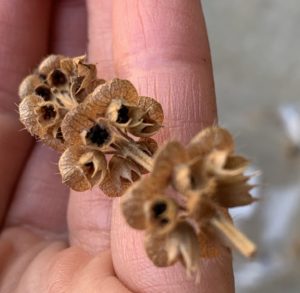
Once the flowers dry completely, place the heads inside a bag and shake vigorously to dislodge the seeds. Remove any flower debris and store the tiny black seeds in a cool, dark, dry place until needed.
Basil is one of the most popular herbs, and for good reason. It’s easy to grow, tastes amazing, and is a beautiful addition to your garden.
Note: If you found this article to be helpful, please share it with someone you think might be interested via email or social media. Thank you!
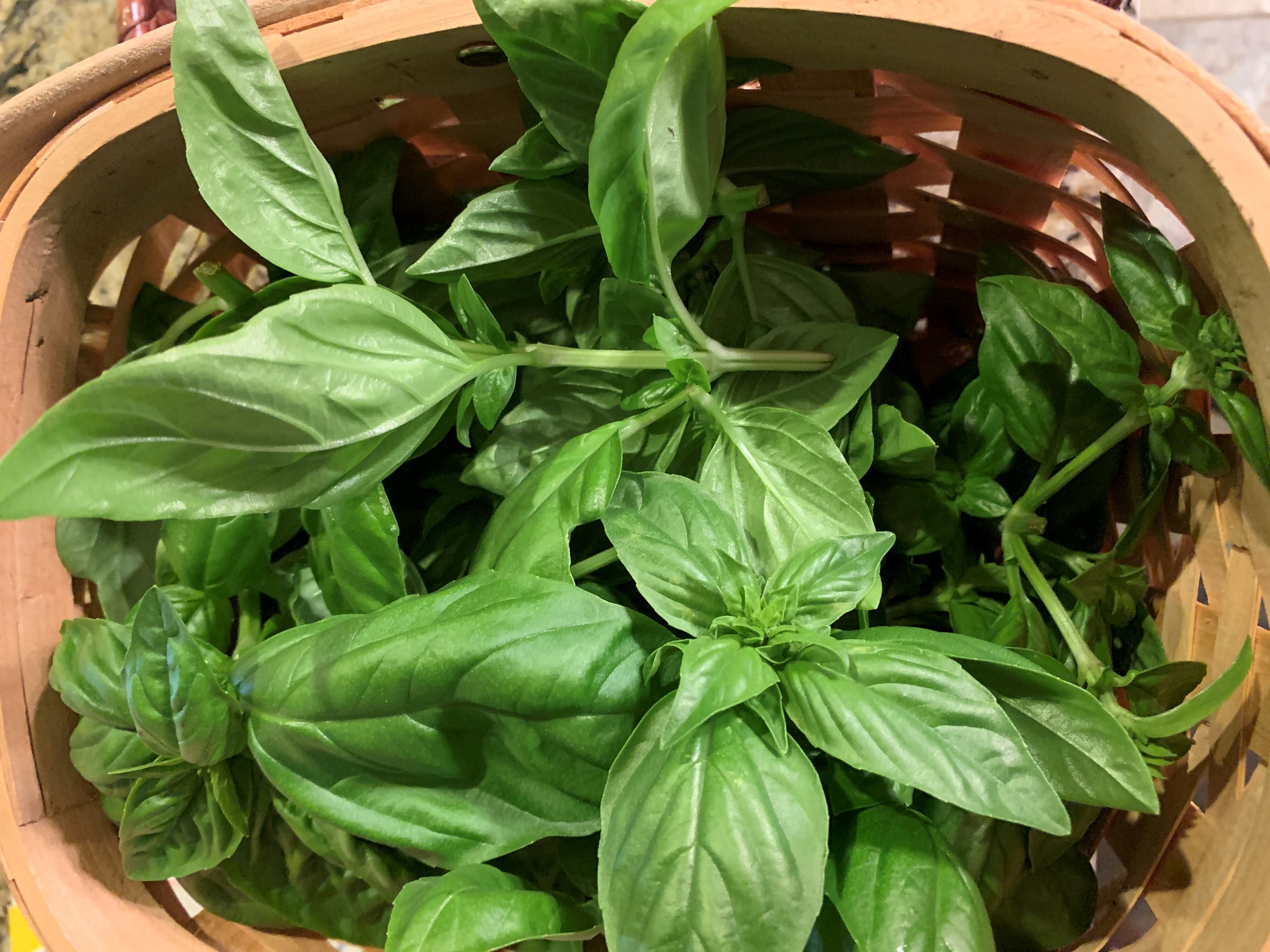
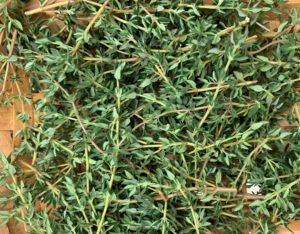
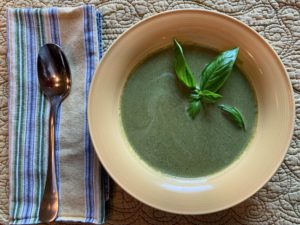
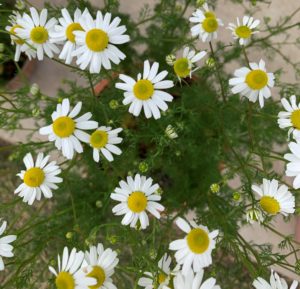
Thank you for the great, detailed article!
Hi Elena!
Thanks for visiting the site and for your encouraging comment! I see that you have a website as well! I look forward to stopping by your site soon!
God bless,
Hildy
Pingback: Mother's Garden | A Healthy Cocktail or Alcohol-Free Drink Made with Brighter Tonic - Girl & Tonic
Pingback: Black Lemon and Basil Cocktail| A Sublime Cocktail with Lemon Basil & Black Lemon - Girl & Tonic